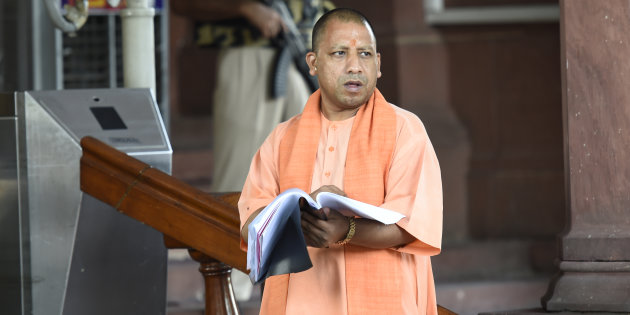The UP government recently revised its syllabus for the state board. It has already garnered attention and raised many eyebrows, because Mughal rulers have been depicted as looters, rather than being portrayed as benevolent and just rulers as had been done till now. Many cynics and leftists see this as a move by the BJP to further its Hindutva propaganda and as a move to alienate the Muslim community. The Maharashtra government dropped Mughals from its history syllabus. These decisions may seem as a propaganda. But, is it really so?
Most of the history we read was written during the British Raj. The British realised that with such a rich culture and a past heritage India wouldn’t be easy to rule, so in order to prolong their rule, they adopted a policy of divide and rule with which we are quite familiar with, but they also manipulated the discourse of Indian history. In order to suppress nationalistic feelings and the pride that Indians took in their culture the British cleverly bent the Indian history that used to be taught in schools to suit their colonialist designs.
Instead focusing on medieval history, when India was at its glory and when Indian scientists achieved spectacular feats, the English decided to focus on the conquests of India by Turks, Arabs, Afghans. Greater importance was given to the rule of the Sultans and Mughals and how they easily crushed any rebellion and defeated the local rulers. No mention was made to the resistance the locals put up and how they gave these rulers sleepless nights. By doing so they were able to cement in the minds of the people that they were meant to be ruled by others and this demotivated the people to some extent.
One must wonder even after the end of British rule we were still continuing with the British rule. India gained independence from the British in 1947, or more than fifty years ago. But intellectually and educationally India continues to be a European colony. This is because, during the first forty years of her existence as a free nation, the Congress Party and the intellectual establishment, continued to encourage colonial institutions and thinking.
The result today is that there is an English educated elite that identifies itself more with the West than with India and her ancient civilization. And the Congress Party, especially after the death of Sardar Patel, has identified itself more with foreign values rather than Indian values. The Communists, who have always been hostile to Indian nationalism, have now joined hands with anti-national forces, which are fiercely anti-Hindu. This is reflected in the attitude and behaviour of the English educated intellectuals, including the media.
The signs of this are everywhere, the leftist intellectuals made it a norm to criticise anything even remotely related to Hinduism. As a result, this colonial holdover consisting of the Congress, the Communists and the Leftist intellectual class (including the media) have come together to perpetuate anti-national values and interests. This naturally makes them intensely anti-Hindu.
It views with fear anything that has even a suggestion of nationalism rooted in Indian history and tradition.
Mughal rulers have been glorified and most of the history syllabus deals with Mughals and the Western world, but not much attention is given to ancient India when India was at its peak, and the era of peace, tranquillity and prosperity existed. Not much mention is made of the rule of the Maurya dynasty, the Guptas and the Rajputs. The only stress on something that has links with ancient India is the caste system (for obvious reasons).
Hindus had to face religious persecution in the form of forceful conversions, had to flee their homes in order to escape from the wrath of these “just” rulers. Temples were razed, mosques were built and taxes in the form of jizyah were imposed if Hindus were to practice their religion. Qutab-ub-din-Aibak who destroyed many temples to build mosques in their place is referred to as a just and benevolent ruler in history textbooks. Similarly, Aurangzeb is called a pir or saint because of his frugal lifestyle, the person who again introduced jizyah and massacred Hindus and looted them just like the previous rulers. He was a saint who tortured Guru Teg Bahadur Singh and Shivaji Maharaj to death. The manner in which these rulers ruled their subjects, killed them, imposed taxes on them made them nothing short of looters.
This step by the government is a welcome one. We can expect much detailed study about rulers like Shivaji Maharaj, Maharana Pratap who have almost been erased from the history and have been treated like losers by the intellectuals, and about India’s glorious past, because the manner in which history is presented defines the course of nation. If more attention is given to the ancient times rather than the medieval times, it will rejuvenate the youth and certainly inspire them, because history is not just a summation of past events but instead its purpose is to show reasons for why and how these events happened and give perspective to pain, breakthroughs, war, associated with them.
